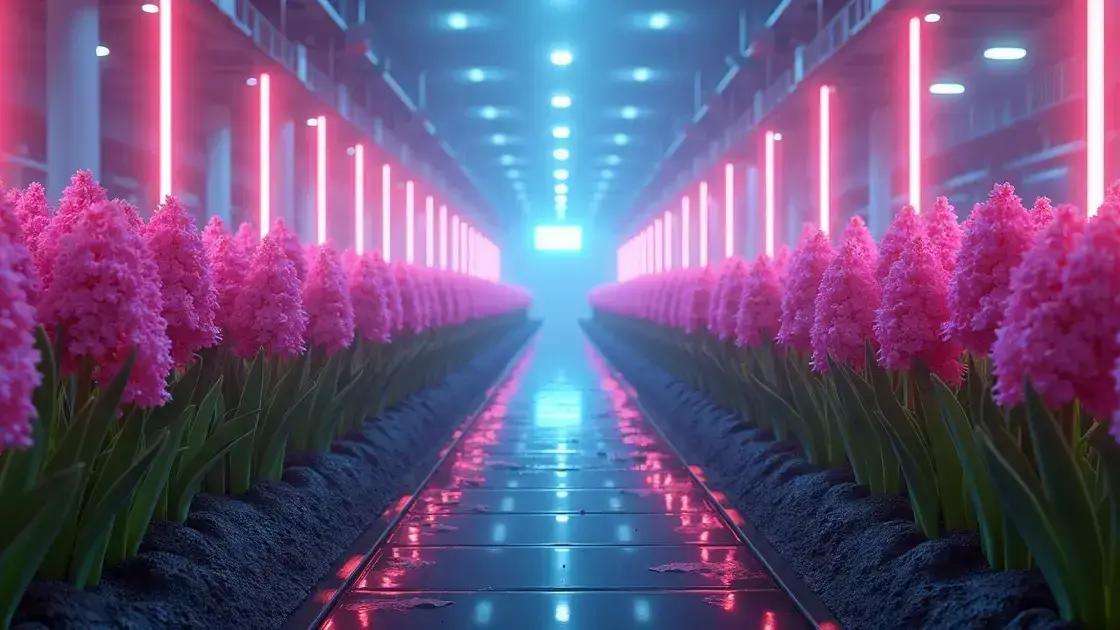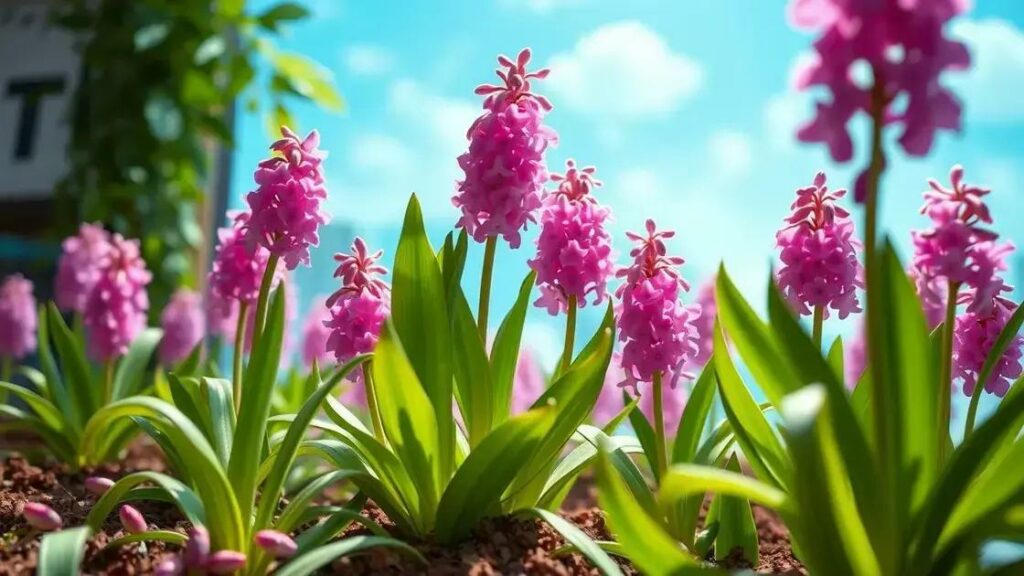How to take care of hyacinth plants indoors requires understanding the right conditions for these beautiful blooms. Creating the perfect environment can lead to vibrant flowers that elevate your indoor decor. Explore the essential elements that will help you flourish your hyacinth plants, from their soil needs to the ideal light conditions necessary for their growth.
Table of Contents
ToggleEssential soil requirements for hyacinth plants indoors
Essential soil requirements for hyacinth plants indoors can greatly impact their growth and flowering. To ensure your hyacinths thrive, it’s important to provide them with the right soil mix.
Choosing the right soil mixture
- Hyacinths prefer well-draining soil that retains some moisture without becoming waterlogged.
- A mix of potting soil, peat moss, and perlite works excellently for these plants.
- Avoid heavy clays or compacted soils, as they can hinder root development and lead to bulb rot.
Soil pH requirements
The ideal soil pH for hyacinth plants indoors should be between 6.0 and 7.0. This range supports nutrient availability for the plants. You can test your soil’s pH using readily available home kits. If adjustments are needed:
- Add lime to raise pH levels.
- Incorporate sulfur or organic matter to lower them.
Enhancing soil quality
For best results, consider enhancing your soil with the following:
- Compost: Adding well-rotted compost enriches the soil and improves moisture retention.
- Organic fertilizers: Slowly release nutrients to support healthy growth.
- Sand: Helps improve drainage and prevent soil compaction.
Repotting hyacinths
Over time, hyacinths may deplete nutrients in the soil, making repotting necessary.
- Change the soil every year or whenever the bulbs outgrow their container.
- Ensure the new pot has drainage holes to prevent water retention.
Exploring indoor gardening techniques
For more tips on the best practices in indoor gardening, such as keeping your soil healthy, check out exploring indoor gardening techniques.
Watering schedule for thriving indoor hyacinths

Watering schedule for thriving indoor hyacinths is crucial for their growth and blooming potential. To keep your hyacinths healthy, establishing a consistent routine is essential.
Understanding hyacinth watering needs
- Hyacinths require moderate watering. Over-watering can cause bulb rot, so it’s important to strike a balance.
- Allow the top inch of soil to dry out between waterings. This will help prevent excess moisture from accumulating.
How often to water
Here’s a basic guideline for your hyacinth’s watering schedule:
- During growth (spring): Water once a week, ensuring the water reaches the roots.
- During blooming (mid-spring to early summer): Increase to watering every 4-5 days, as the plants are more active.
- Post-blooming: Gradually reduce watering. Allow bulbs to rest during dormancy in summer.
Signs of over-watering
Be aware of the following signs to avoid over-watering:
- Yellowing leaves, which indicate stress from excess moisture.
- Soft, mushy bulbs that have begun to rot.
- Mold growth on the soil surface or around the bulbs.
Watering tips for success
To optimize your watering routine for indoor hyacinths, consider these helpful strategies:
- Use room temperature water to avoid shocking the plants.
- Try bottom watering by placing pots in a shallow dish of water for a few hours.
Learning more about indoor gardening
For more tips and techniques on maintaining healthy indoor plants, check out exploring indoor gardening techniques.
Optimal sunlight exposure for hyacinth growth
Optimal sunlight exposure for hyacinth growth is essential for their health and blooming. To achieve vibrant flowers indoors, it’s crucial to know how much light these plants need.
Understanding light requirements for hyacinths
- Hyacinths thrive in bright, indirect sunlight. Direct sunlight can be too harsh, potentially scorching the leaves.
- Providing adequate light is key to encouraging healthy bulb development and preventing leggy growth.
Ideal locations for hyacinth plants
Consider the following types of areas in your home for the best sunlight exposure:
- Near windows: Place hyacinths near east or west-facing windows, where they can receive bright, filtered light.
- Sunrooms: A sunroom provides ample light without the intensity of direct sunlight, making it ideal for these flowers.
- Indoor gardens: Create a dedicated indoor garden space with grow lights to supplement natural light during shorter days.
Signs of inadequate light
Monitor your hyacinths for these signs that may indicate they are not receiving sufficient sunlight exposure:
- Leaves turning yellow or dropping off.
- Weak, spindly growth as the plants stretch toward light sources.
- Delayed blooming or failure to flower at all.
Using grow lights effectively
If natural light is insufficient, consider using grow lights to enhance growth:
- Select full-spectrum LED grow lights to provide optimal wavelengths for plant development.
- Position grow lights approximately 12-18 inches above the plants and on a timer to provide 12-14 hours of light daily.
Learn more about indoor gardening
For additional tips on maximizing your indoor plant care, visit exploring indoor gardening techniques.
In conclusion
Caring for hyacinth plants indoors requires attention to several key factors, including proper soil, watering schedules, and optimal sunlight exposure. By implementing these essential tips, you can ensure healthy growth and stunning blooms that enhance your living space.
For further insights and tips on enhancing your indoor garden, don’t hesitate to explore other plant care resources!

